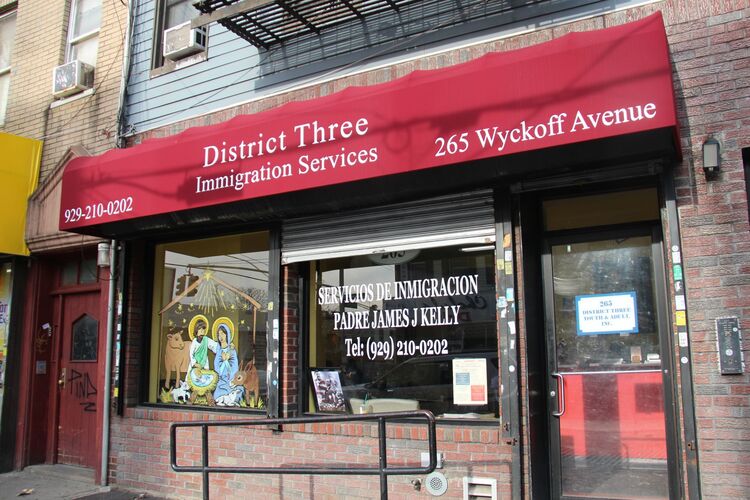On March 5, Limerick TD and Minister for Arts and Culture Patrick O’Donovan announced that the 2025 National Famine Commemoration would be held in Kilmallock.
The event will precisely occur at Kilmallock Famine Memorial Park, part of the historic Workhouse complex.
This marks the first time County Limerick has been selected for the commemoration, which takes place this coming Saturday, May 17.
In the parish of Kilmallock, there is a famine graveyard believed to contain the remains of up to 8,000 people who either died in the workhouse or in the town itself.
Furthermore, the graveyard served as a burial place for the area's poor until around the 1920s, signifying the persistence of poverty long after the Famine ended.
In June 1999, President Mary McAleese inaugurated the Famine Memorial Park in Kilmallock. It's where the Famine monument was unveiled to honor those buried there. This mass grave in the memorial park is the venue for the 2025 Irish Famine Commemoration Day ceremony.
The Irish Famine, also known as the Great Hunger, ravaged Ireland between 1845 and 1852, leaving a deep and lasting impact on its people, economy, and landscape.
The suffering was widespread, with hunger, disease, and emigration touching virtually all parts of the island in different ways. With this in mind, the Irish Famine Commemoration Day spotlight lands on a new host location each year – a location whose famine experience, while perhaps not unique, exemplifies life during this sad period of Irish history.
The Great Hunger is often associated with areas known for severe conditions or grim events, highlighted by global press coverage. Included in those areas are Skibbereen, Co. Cork, for the sheer level of suffering; Strokestown, Co. Roscommon, due to forced emigration; and Ballinlass, Co. Galway, a comparably wealthy community whose landlord, intent on clearing the land for cattle grazing, intentionally avoided collecting rents.
In doing so, he was able to bend the rules and simultaneously evict some 200 families based on “overdue rents, " despite the human cost. However, not all suffering communities made the headlines. This year’s Irish Famine Commemoration Day location, Kilmallock, is a historic market town in southern County Limerick. This lesser-known town endured the same horrors as its more famous counterparts during the famine.
Before the Irish Famine, County Limerick had a thriving agricultural economy, with a rural population heavily reliant on the potato crop. When the potato blight struck, food shortages led to mass starvation and disease.
Reports from the Society of St. Vincent de Paul described horrific conditions in Limerick City, where families lived in extreme poverty, suffering from malnutrition and illness. The rural areas, including Kilmallock, faced similar devastation. High mortality rates and emigration, forced or otherwise, meant a staggering population decline in the county.
In 1841, 330,000 people called County Limerick home. By 1851, that figure had dropped to 262,000, the beginning of a pattern that would last for decades. The Famine caused immediate suffering and led to long-term economic and social changes, including shifts in land ownership and agricultural practices.
Kilmallock, renowned for its medieval heritage and strategic location, was profoundly impacted by successive potato crop failures, forcing a town with a bustling market center into an economic collapse. Food shortages worsened as the famine continued, and due to financial stress on local landlords, the frequency of evictions grew, magnifying the plight of those now destitute and homeless local residents.
Many sought refuge in workhouses or emigrated if possible. The town’s population declined significantly, mirroring the broader trend across the county and Ireland. Prolonged famine or disease starts to take its toll. Outbreaks of diseases such as cholera, dysentery, and typhus, then called “famine fever,” spread rapidly due to poor living conditions. Kilmallock's population in 1841 was 1,408, but by 1851 it had dropped to 1,074, with females being the most affected, a statistic repeated in deaths and emigration during the Famine.
The disparity between the wealthy and the poor in County Limerick was vast, even decades before the Great Hunger. In the autumn of 1841, J. Stirling Coyne remarked on the resemblance of Limerick's principal street to New York, noting the “tall and handsome brick houses, iron railings, and clean sidewalks.” However, this observation overlooked the plight of the poor residing in Limerick's "Old Town" and rural areas experiencing extreme poverty.
Henry David Inglis, a Scottish travel writer, observed a distinct line drawn between Limerick's good and bad quarters fifteen years before the Famine. The Limerick Food Riots of 1830 demonstrated this disparity, with nineteen acts of food confiscation by the poor, who could not afford food sold in shops. On June 25, 1830, over 200 people took matters into their own hands, robbing shops, boats, and food carts of oatmeal, butter, and flour.
The Limerick City Workhouse, which began admitting paupers on May 19, 1841, provided a tragic window into the dire circumstances the impoverished residents faced. The Limerick Reporter described the process of intaking indigents: “each pauper was inspected, stripped of their clothes, had their hair cut off, and was washed from head to foot. Men and women were dressed in coarse linen shirts, trousers, jackets, shoes, and stockings for men, while women wore shifts, frocks, wrappers, caps, and grey socks.”
The Rathkeale Workhouse, built to house 660 inmates, saw additional buildings added during the height of the Famine to accommodate more people. Doctors across the country reported an increase in fever and stomach issues. Doctor O'Connell from the Kilmallock Dispensary noted that fever and smallpox had appeared, generated by consuming diseased potatoes, while Doctor Herbert in Kilfinane reported a prevalence of stomach complaints.
Kilmallock Union Workhouse was built on a seven-acre lot in 1839. Designed to house 800 inmates, the first admittance was on March 29th, 1841, which testifies to the levels of poverty experienced in the area even before the potato blight struck in September 1845. During the Famine, providing additional accommodation was necessary by constructing sheds that housed 200 inmates, along with a fever shed for 40 individuals. On September 10, 1846, B. Banks, a "clerk first class" for the Kilmallock Union Board of Guardians, reported a significant increase in “poverty and distress among the laboring population of the union.”
The Kilmallock Union’s Minute Book, accessible online at Limerick.ie, contains a table titled the "State of the Workhouse” with headings such as the Number of Inmates for whom accommodation is provided, Temporary Buildings, Additional Workhouses, Permanent Fever Hospital, Fever Sheds, Aged and Infirm, Able-Bodied, Boys and Girls; Children under 2 years, and Born, all of which distinguish between male and female. Additional headings include Return of Sicks and Lunatics, Number of Lunatics and Idiots in Workhouse, Observations, Admitted during the Week, Discharged during the Week, Died, and Total Discharged. The archive, spanning from March 28, 1846, to February 6, 1847, comprises 253 pages of handwritten details regarding the Kilmallock workhouse. It is one of many minute books available online and, not surprisingly, shows an increase in the number of admitted “paupers’ over the 12 months.
Those in Limerick who could not enter the workhouse had almost no option but to emigrate. Charles Barrett, a young man from nearby Rathkeale, emigrated in 1851 with his wife, Ellen, boarding the Argo bound for New York. The ship's manifest listed him as a mason, but he worked as a shoemaker in the U.S., a skilled trade that may have been acquired in Ireland.
By 1857, Charles had withdrawn $12.11 from his Emigrant Industrial Savings Bank and closed his account. Despite their hopes for a better future, Charles and Ellen Barrett did not escape the harshness of life. Ellen died young, and Charles went from being a skilled shoemaker to a factory worker, living as a renter in another man's home. Their story reflects the broader narrative of Irish immigrants facing adversity in their quest for a better life.
Ireland’s Great Hunger Museum of Fairfield will host its second annual Irish Famine Commemoration Day at the Gaelic American Club in Fairfield, Connecticut, on Sunday, May 18, starting at noon. The commemoration will begin with the laying of wreaths and will be followed by tea, coffee, and light bites, along with a slideshow presentation about the history of County Limerick during the Irish Famine.







